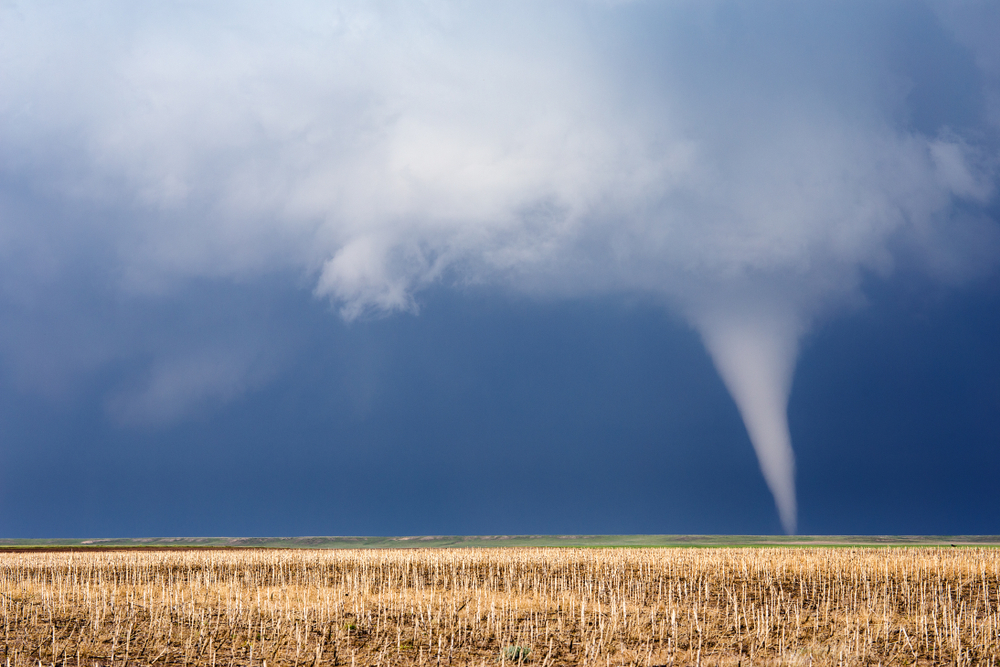Here’s How an Unseasonably Warm “False Spring” Impacted Parts of the U.S.
Posted on Categories Discover Magazine

As February 2024 drew to a close, many residents across the Midwest and parts of the western United States saw unseasonably warm temperatures. The spring weather, which usually tends to show up in mid to late March, arrived early for some of these states this year, known as “false spring.” Even though the Midwest could enjoy a warm sunny day, within hours, a winter whiplash pushed the warmth out and plummeted temperatures to below freezing.
From tornados to blizzards to record-breaking temperature drops, here is how the February false spring weather impacted different regions across the U.S.
Read More: Why Are Tornadoes so Dangerous?
Location: Madison, Wisconsin (surrounding areas)
Date: February 8, 2024
False spring impact: Crazy temperature drops aren’t the only weather phenomena to hit Wisconsin this winter. While a February blizzard is relatively common for the Dairy State, residents did not suspect a winter tornado to touch down instead. According to the Milwaukee Journal Sentinel, the state’s tornado season usually doesn’t start until April. The tornado caused significant damage to homes, structures, trees, and telephone polls. Coupled with the tornado, many in the area experienced heavy rain and hail.
Average temp for that time of year: According to the Wisconsin State Climatology Office, the average winter temperatures for Southeastern Wisconsin are around 20 to 30 degrees.
Location: Salt Lake City, Utah (surrounding areas)
Date: February 25 to March 1, 2024
False spring impact: According to the Salt Lake Tribune, the area had its warmest temperature of the year at 63 degrees on Sunday, February 25, 2024, about 14 degrees higher than average.
However, after the minor heatwave, frigid temperatures and snow swept back in Monday night. The cold and snow didn’t last long, as temperatures peaked back into the 60s by Thursday.
Average temp for that time of year: According to the National Weather Service, the average February temperatures for the Salt Lake City area range from 40 to 50 degrees.
Location: Fargo, North Dakota
Date: February 26 to February 27, 2024
False spring impact: According to the Weather Channel, Fargo saw temperatures rise to 61 degrees on Monday, February 26, 2024. This is the second time in 143 years that the mercury has gone that high during a Fargo February.
However, overnight, the area was hit by a blizzard, with winds raging between 40 and 50 miles per hour and temperatures dropped about 54 degrees.
Average temp for that time of year: The average temperatures in North Dakota in February are about 14 degrees.
Location: Saint Joseph, Missouri
Date: February 27 to February 28, 2024
False spring impact: Another record-breaking day as residents of the St. Joseph, Missouri area enjoyed high temperatures of 78 degrees. However, temperatures dropped to 20 degrees by midnight, and light snow fell.
Average temp for that time of year: The average February temperatures of Saint Joseph are around 30 degrees.
Read More: Five Incredible Weather Phenomena
Other Effects Of False Springs
Researchers have been publishing their findings on false springs since 2013. These unnatural warm days can spell out disaster for the coming season. Warmer temperatures can cause flowers and trees to begin budding too early, exposing them to the winter weather that will inevitably come back after the warm streak. According to a 2019 study, this can damage the ecology of the plant and possibly any economic benefit it has.